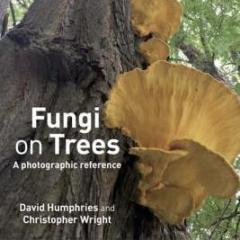Hornbeam Tree - (Carpinus betulus)
The Hornbeam Tree (Carpinus betulus), is a tough a tree as any. It is both beautiful and useful with leaf cover all year round, making it a haven for a lot of wildlife through the winter months.
The Hornbeam is also known as the common hornbeam or European hornbeam and it is a native species from the Betulaceae family.
When hornbeam trees reach maturity, they can be as high as 30 metres. They can also live for over 300 years.
What do Hornbeam Trees Look Like?
The Hornbeam is a broadleaf, deciduous tree with light grey bark. The bark has vertical marking and the trunk is often twisted with ridges as it ages. The hornbeam's twigs are a grey-brown colour and appear slightly hairy. In terms of its leaf buds, these look similar to those of the beech tree but they curve slightly at their tips and are shorter. They have an oval shape and pointed tip. To distinguish between the hornbeam and the beech, you will notice that the beech has wavy edges while the hornbeams are more like fine-toothed edges. The leaves look pleated and the seeds are between 3 and 6 mm long. They’re held in place by a three0lobed leafy bract.
During the cooler months, the hornbeam is recognisable by its distinctive paper-like seeds that hand in clusters during autumn. Leaf buds present themselves pressed against the twigs. In autumn, the leaves turn from green to golden yellow and then orange and most of them stay on the tree through the winter.
Hornbeam Tree Flowers and Fruits
The hornbeam tree is monoecious. This means that it grows both female and male catkins on the same tree. When the tree is pollinated by the wind, the female catkins become papery, green-winged fruits that are called samaras.
Where Can You Find Hornbeams?
The hornbeam is native to the south of the UK. These trees are found naturally in oak woodlands and will often be pollarded or coppiced. In Europe, there are only two species of hornbeam but in East Asia, there are between 30 and 40 different species.
How Valuable Are Hornbeams to Wildlife and Ecology?
Just like the similar-looking beech tree, a hedge made from hornbeam trees will not lose its leaves through the winter. This means it provides shelter for wildlife and many small mammals and birds will use the hornbeam hedge for nesting, roosting and foraging. This tree species is also a food for many species of moth caterpillars, this includes nut tree tussocks. Small mammals, tits and finches eat the hornbeam’s seeds during the autumn months.
Symbolism and Mythology Associated with The Hornbeam Tree
Due to the hornbeam’s strength, the Ancient Romans would make chariots out of the wood.
In an area of Northern France called Valenciennes, there is a tradition to put a branch of a hornbeam tree in front of the door belonging to your sweetheart.
Hornbeam Uses
The timber of the hornbeam tree is a pale cream colour and has a grain that is flecked. The wood is extremely hard and is the hardest timber available in Europe. These days, hornbeam wood is used for flooring, wood-turning and furniture. In the past, however, the wood would be used for ox yokes. These devices joined oxen together as they ploughed the land. The beam of wood would have been attached to the horns of the oxen and this might be where the tree got its name ‘hornbeam’. There is another theory too, however. In old English, ‘horn’ meant ‘hard’ and the word ‘beam’ meant ‘tree’ so the hornbeam means ‘hard tree’.
Hornbeam wood has also been used in making coach wheels, windmill and watermill cogs, wood screws, piano hammers and butchers’ blocks. As well as this, the wood was also pollarded and coppiced to make poles. Finally, the wood is good for burning and makes great charcoal.
Also, previous uses involve a tonic being made from the hornbeam that apparently, relieved exhaustion and tiredness. The leaves used to be used to heal wounds and stop bleeding too.
Hornbeam Conservation and Threats
In terms of disease, the hornbeam is susceptible to Phytophthora and other fungal diseases. It also suffers from grey squirrel damage as they can strip the bark.
Taking Care of Your Hornbeam Trees
Generally speaking, hornbeams are low maintenance trees and they don’t need much more than a bit of light pruning. As long as diseased or dead branches are removed regularly and there is adequate airflow, the hornbeam will look after itself. Airflow can be maximised by removing congested shoots. What’s more, pollarding or coppicing hornbeams will help to increase their lifespan and will help the hornbeam to grow taller.
All pruning that isn’t an emergency should be carried out at the end of summer or the beginning of autumn. This is to avoid sap from bleeding out as this can make the tree susceptible to diseases.
Hornbeam hedges should be pruned to help maintain the hedge’s shape so that it appears tidy and neat. During an average year, hornbeams will have two main periods of growth with one growth spurt occurring in the spring and the second occurring in summer. The hornbeam should be trimmed after each growth period so that it stays tidy. The summer cut should occur in September ensuring that the leaves haven’t yet changed colour or dropped.
You need to take care when pruning hedges that are deciduous because the leaves can turn brown easily if you are too rough with your trimming. If you are careful, your hedge will stay dense and attractive throughout the winter months.
Caring for a hornbeam tree is pretty simple but look out for coral spot and powdery mildews. Mildew shows as a dusty coating that appears on the stems, leaves and flowers and it is white. Coral spot causes branches to die back and you will see small fungal pustules that are a coral-pink colour. If you do encounter problems, it is best to contact a qualified tree surgeon as they will know how to treat these diseases for the best possible outcome of your tree.
----------------------------------------
Thanks for reading our article. If you would like to read more articles like this they can be found on our blog.
-
 2
2
-
 2
2






0 Comments
Recommended Comments
There are no comments to display.
Create an account or sign in to comment
You need to be a member in order to leave a comment
Create an account
Sign up for a new account in our community. It's easy!
Register a new accountSign in
Already have an account? Sign in here.
Sign In Now